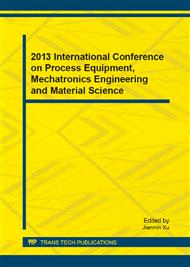p.483
p.487
p.492
p.497
p.503
p.508
p.513
p.522
p.527
A Spiro [Fluorene-9, 9’-Xanthene]-Based Host Material for Efficient Green and Blue Phosphorescent OLED
Abstract:
A spiro [fluorene-9,9-xanthen-based host material SFX-PF, without possessing conventional hole-or electron-transporting units, has been demonstrated to be host material for efficient and low voltage green phosphorescent organic light-emitting device (PHOLED). This compound showed good thermal stability with high glass transition temperatures (Tg) at 172 °C. The green device exhibited a low turn-on voltage of 3 V, and maximum current efficiency, power efficiency, and external quantum efficiency (EQE) up to 47.9 cd/A, 45.4 lm/W, and 13.2%, respectively. At the luminance level of 1000 cd/m2, the driving voltages are still lower than 4 V with 15.9% roll-off in the EQE. In addition, SFX-PF can also host Fir6 with the blue device exhibiting a low turn-on voltage of 2.8 V and maximum current efficiency, power efficiency, and EQE up to 12.8 cd/A, 11.3 lm/W, and 7.5%, respectively. Based on our present and previous studies, it can be concluded that SFX could serve as a new building block for designing blue and green phosphorescent host materials.
Info:
Periodical:
Pages:
503-507
Citation:
Online since:
July 2013
Authors:
Price:
Сopyright:
© 2013 Trans Tech Publications Ltd. All Rights Reserved
Share:
Citation:


